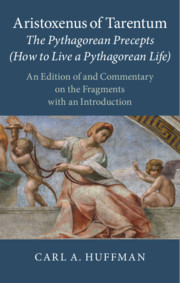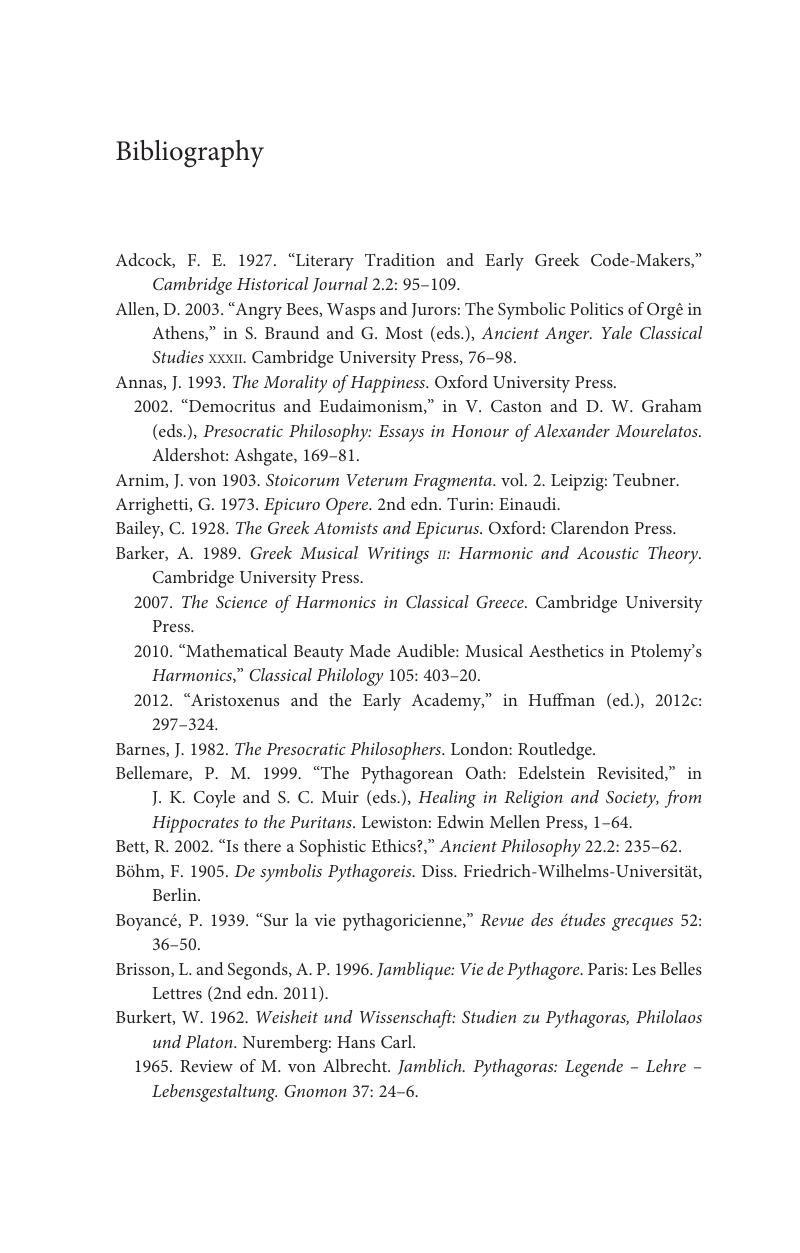 Aristoxenus of Tarentum: The Pythagorean Precepts (How to Live a Pythagorean Life)
Aristoxenus of Tarentum: The Pythagorean Precepts (How to Live a Pythagorean Life) Book contents
- Aristoxenus of Tarentum: the Pythagorean Precepts (How to Live a Pythagorean Life)
- Aristoxenus of Tarentum: the Pythagorean Precepts (How to Live a Pythagorean Life)
- Copyright page
- Dedication
- Contents
- Preface
- Abbreviations
- Part I Introduction
- Part II Fragments with Translation and Commentary
- Appendices
- Concordance with the Fragment Numbers in Wehrli’s Edition
- Bibliography
- Select Index of Greek Words and Phrases Discussed
- Index Locorum
- General Index
- References
Bibliography
Published online by Cambridge University Press: 31 October 2019
- Aristoxenus of Tarentum: the Pythagorean Precepts (How to Live a Pythagorean Life)
- Aristoxenus of Tarentum: the Pythagorean Precepts (How to Live a Pythagorean Life)
- Copyright page
- Dedication
- Contents
- Preface
- Abbreviations
- Part I Introduction
- Part II Fragments with Translation and Commentary
- Appendices
- Concordance with the Fragment Numbers in Wehrli’s Edition
- Bibliography
- Select Index of Greek Words and Phrases Discussed
- Index Locorum
- General Index
- References
Summary

- Type
- Chapter
- Information
- Aristoxenus of Tarentum: The Pythagorean Precepts (How to Live a Pythagorean Life)An Edition of and Commentary on the Fragments with an Introduction, pp. 606 - 615Publisher: Cambridge University PressPrint publication year: 2019


